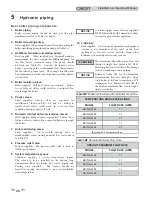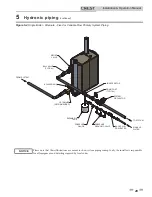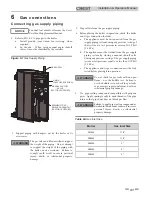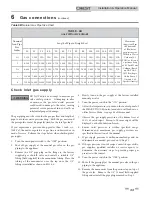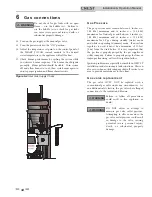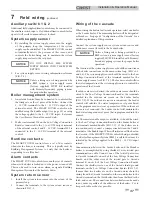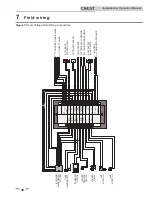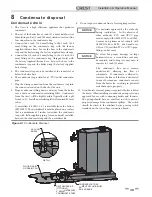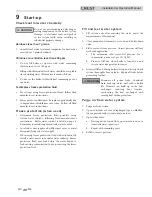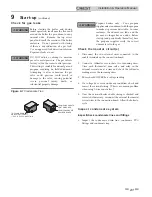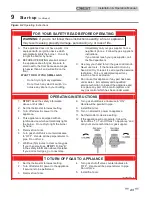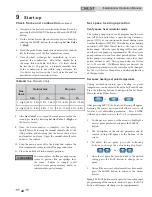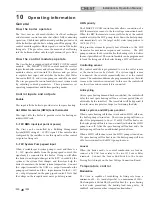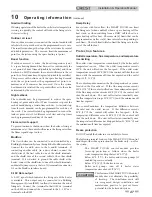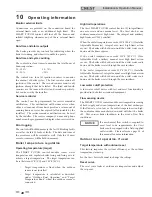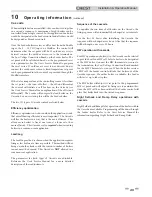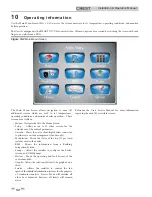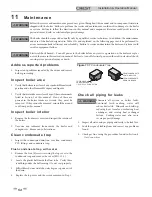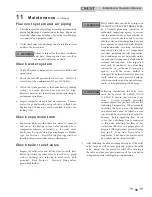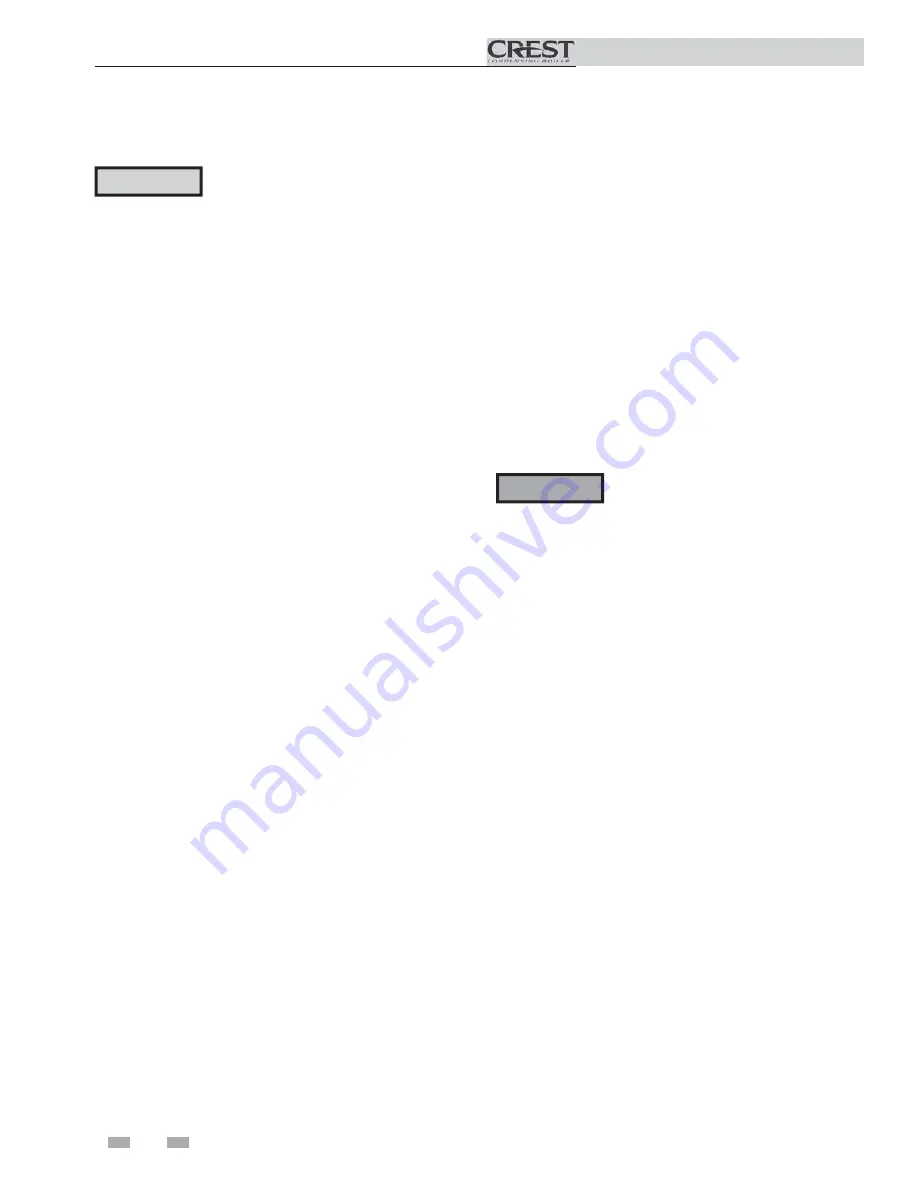
40
Installation & Operation Manual
9
Start-up
Check/control water chemistry
Do not use petroleum-based cleaning or
sealing compounds in the boiler system.
Damage to elastomer seals and gaskets
in the system could occur, resulting in
substantial property damage.
Hardness less than 7 grains
1. Consult local water treatment companies for hard water
areas (above 7 grains hardness).
Chlorine concentration less than 200 ppm
1. Do not fill boiler or operate with water containing
chlorine in excess of 200 ppm.
2. Filling with chlorinated fresh water should be acceptable
since drinking water chlorine levels are much lower.
3. Do not use the boiler to directly heat swimming pool or
spa water.
Test/replace freeze protection fluid
1. For systems using freeze protection fluids, follow fluid
manufacturer’s instructions.
2. Freeze protection fluid must be replaced periodically due
to degradation of inhibitors over time. Follow all fluid
manufacturer’s instructions.
Freeze protection (when used)
1. Determine freeze protection fluid quantity using
system water content, following fluid manufacturer’s
instructions. Boiler water content is listed on page 6.
Remember to include expansion tank water content.
2. Local codes may require a backflow preventer or actual
disconnect from city water supply.
3. When using freeze protection fluid with automatic fill,
install a water meter to monitor water makeup. Freeze
protection fluid may leak before the water begins to
leak, causing concentration to drop, reducing the freeze
protection level.
Fill and test water system
1. Fill system only after ensuring the water meets the
requirements of this manual.
2. Close manual and automatic air vents and boiler drain
valve.
3. Fill to correct system pressure. Correct pressure will vary
with each application.
a. The minimum cold water fill pressure for a
commercial system is 12 psi (82.7 kPa).
b. Pressure will rise when boiler is turned on and
system water temperature increases.
Eliminate all system leaks. Continual
fresh makeup water will reduce boiler
life. Minerals can build up in the heat
exchanger, reducing heat transfer,
overheating the heat exchanger, and
causing heat exchanger failure.
Purge air from water system
1. Purge air from system:
2. Open automatic air vent (diaphragm-type or bladder-
type expansion tank systems only) one turn.
3. Open
other
vents:
a. Starting on the lowest floor, open air vents one at a
time until water squirts out.
b. Repeat with remaining vents.
4. Refill
to
correct
pressure.
4. At initial fill and during boiler startup and testing, check
system thoroughly for any leaks. Repair all leaks before
proceeding further.
WARNING
CAUTION

